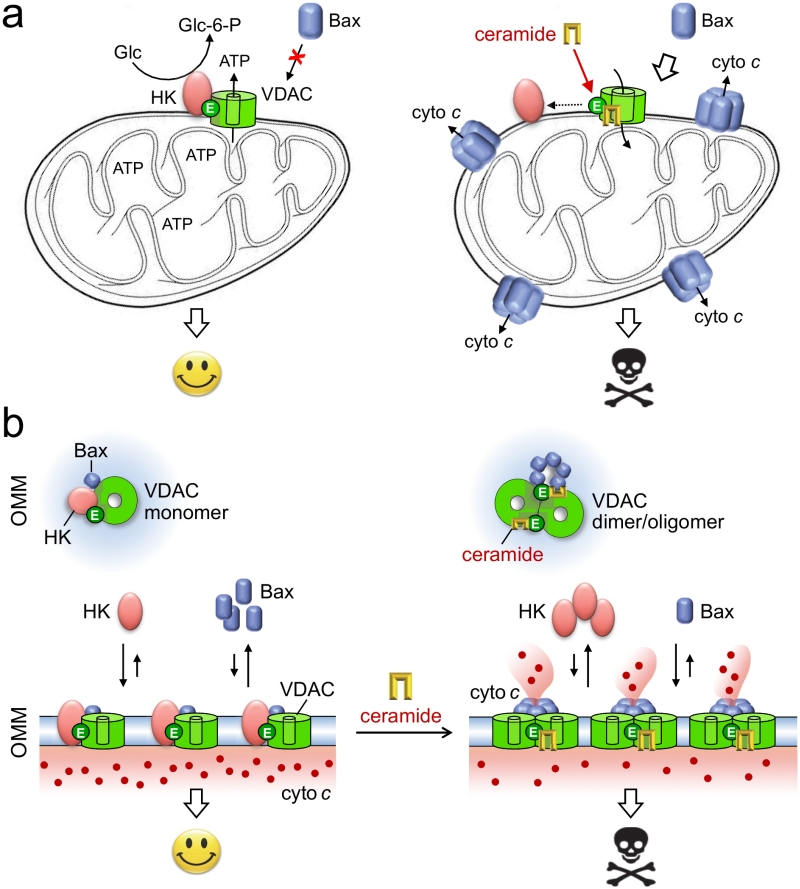Back to article: Unraveling the molecular principles by which ceramides commit cells to death
FIGURE 2: Model of how ceramides may exert their tumor suppressor activities. (A) Under non-stressed conditions, the bulk of hexokinases (HK) is bound to VDACs. This interaction antagonizes cell death by blocking mitochondrial translocation of Bax and renders cancer cells hyperglycolytic by enhancing the phosphorylation of glucose, the rate-limiting step in glycolysis. As ceramides bind VDACs at a site that overlaps with the binding site for HK, the arrival of these stress mediators in mitochondria may promote dissociation of HK from VDACs. This would revert the hyperglycolytic state of cancer cells as well as sensitize them to Bax-dependent apoptosis. (B) Binding of HK and ceramide to VDACs in each case is critically dependent on a Glu residue that faces the hydrophobic membrane interior. We postulate that ceramide binding facilitates VDAC dimerization/oligomerization, a process that hinders the association of HK and helps create mitochondrial platforms for Bax translocation. See text for further details.

